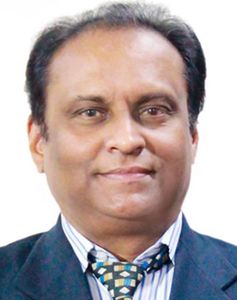OPENING UMBRELLAS in Kollam, when it is raining in Kochi.” Sounds innocuous, till you are told that these two places are around 150km apart. Going by the floods in Delhi, it can be modified as, “When it rains in Himachal, get on to boats in Delhi.” Though the popular saying in Malayalam is to make fun of doing things out of place, it has become true in Delhi. When rains poured in Himachal Pradesh and Uttarakhand, the Yamuna overflowed in Delhi, inundating its areas. It touched 208.66m, above the danger mark of 205.33m, breaching its own record of 207.49m, set 45 years ago. Delhi suddenly got raving comparisons to Venice, as its highways turned into waterways. Thousands got affected and had to be shifted from their dwellings, many of them illegally built on the Yamuna floodplains.
Why did the Yamuna take this ugra-roop (fierce form)? The Yamuna is normally in deep slumber in its 22km stretch in Delhi. The Yamuna hardly ‘flows’ here for much of the year, confined between Wazirabad and Okhla barrages, living up to its moniker ‘Kalindi’, meaning one with dark hue. Here it is just a dark cesspool of sewage or industrial waste, brought in by the 18 major nullahs on its banks. Only 11 of these nullahs are tapped now. Efforts are on to tap the rest. Sewage treatment plants are built or being built to prevent ingress of untreated water. This 22km-stretch accounts for 90 per cent of pollution in Yamuna’s 1,376km journey from Yamunotri to Prayagraj to make its tryst with its destiny―the Ganga.
We can blame it on climate change-induced high-intensity rainfall and our failure to manage it. There are other reasons, too―rapid urbanisation; extensive tiling or concreting causing diminished permeability; high runoff; reduced open areas; poor maintenance of rainwater harvesting structures; silting up and disappearance of water bodies, which results in less water soaking or storage capacities and less groundwater recharge; poor urban planning and ineffective implementation of laws. Then there are encroachments on the Yamuna’s floodplains, depleting green cover, inadequate drainage capacity, improper solid-waste management and clogging of nullahs. We may never run out of excuses, but the excess water will run out of Delhi, even taking the streets, if needed!
After the deluge, later in summer, drinking water shortage hits the city, with many areas needing tanker water supply. Isn’t this a classic case of improper demand-supply management? Is there a way out? Yes. Urban water challenges are multi-dimensional, warranting cocktail solutions. It calls for scientific urban planning, recognising water and rivers as key resources. We have to prepare urban river management plans (URMPs), acknowledging rivers as engines for tourism and economic growth that improves city aesthetics and health of people. We must ensure people’s participation and promote water reuse. Above all, we need a strong political will to implement the URMP, rising above politics of one-upmanship. We need to catch the rain, where it falls and when it falls―catch, train and drain out the rains, pyar se (with love).
Floodplains are to be demarcated, ensuring zoning regulations to protect life and property from fluvial floods. ‘Room for the river’ is a concept implemented in the Netherlands. Maharashtra demarcates riversides with blue and red flood lines, indicating the flood levels from 25 and 100 years ago. While no development is allowed between the blue lines on riversides, restricted development is allowed between the red and blue lines. In many cities, development progresses till the edge of the rivers, making these areas prone to floods. While cities located on the banks of well-managed rivers, like London, have leveraged rivers as growth engines, Indian cities have missed the boat by misusing the rivers flowing beside them as sewage and industrial waste conveyors.
We need to adopt innovative unconventional solutions―a hybrid of engineering and nature-based or decentralised. Adopt localised flood management like maintaining healthy water bodies―lakes and ponds―to serve as effective catchments to capture storm water, which can efficiently abate the magnitude and intensity of floods.
Cities can learn much from each other and share experiences. The River Cities Alliance (RCA), a first-of-its-kind alliance in the world set up recently by the National Mission for Clean Ganga and the National Institute of Urban Affairs, is a dedicated platform for river cities in India to ideate, discuss and exchange information and URMP preparation. With more than 120 member cities, the RCA provides a platform for dedicated discussions on urban river management. There are online modules developed to build capacities on river-sensitive urban planning.
If the URMP concept is well accepted, we may see cruise rides on Indian rivers and a ‘tankers-mukt Bharat’. If the URMPs prepared are dumped in a well, be prepared to suffer the water curse.
―Kumar is director general, National Mission for Clean Ganga. Views expressed are personal.



